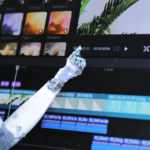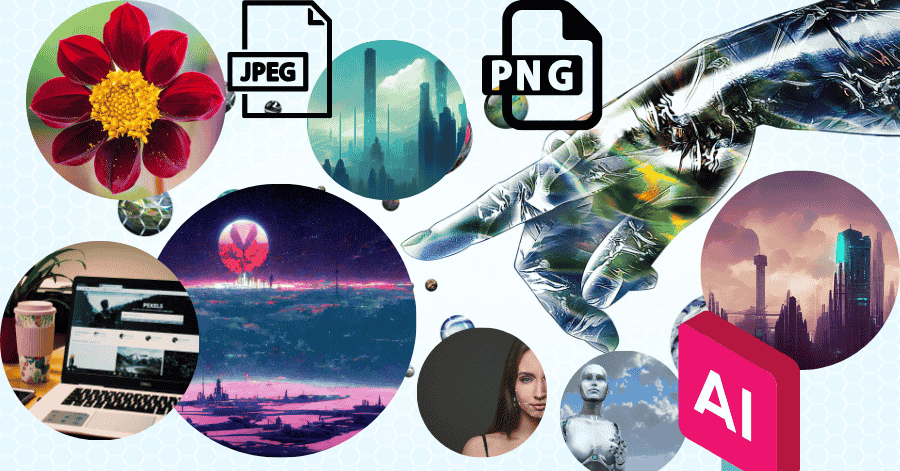
The Future of Video Creation with AI: Opportunities and Challenges Ahead
September 16, 2024
How AI is Changing the Future of Marketing Automation
September 16, 2024The rise of AI image generation tools has revolutionized how designers and marketers approach visual content creation. From automating complex design tasks to creating unique visuals in minutes, AI is reshaping the creative landscape. For digital marketers, developers, and content creators, these tools offer a powerful way to enhance campaigns, improve engagement, and reduce production time. In this article, we will explore the top AI image generation tools, their benefits, and how they are transforming the workflows of designers and marketers alike.
Table of Contents
1. How AI Image Generation Works and Why It Matters
AI image generation refers to the process of using algorithms and machine learning models to create images based on user input or preset patterns. These tools leverage neural networks, such as GANs (Generative Adversarial Networks), to produce high-quality images that can be used in various marketing and design contexts.
AI and Creativity: Bridging the Gap
AI tools don’t replace human creativity; they enhance it by automating repetitive tasks, freeing up time for designers and marketers to focus on more strategic decisions. With AI, creating visually appealing graphics is faster and more accessible to non-designers. This allows businesses to consistently produce professional-grade visuals without relying on expensive design agencies.
- Example: A marketing team can generate product mockups or social media posts with just a few clicks, allowing them to react quickly to trends without sacrificing quality.
2. Top AI Image Generation Tools for Designers and Marketers
AI-driven image generation platforms have flooded the market, each offering unique features tailored to different needs. Here are some of the top tools transforming the industry:
2.1. DALL·E by OpenAI
DALL·E is a leading AI image generator known for creating imaginative and detailed visuals based on textual descriptions. Marketers and designers use DALL·E to generate everything from product imagery to conceptual artwork, simply by inputting descriptive phrases.
- Key Feature: DALL·E excels in producing complex and highly creative images that cater to a broad range of industries, making it a versatile tool for both marketers and designers.
- Use Case: E-commerce brands can leverage DALL·E to create unique product images for websites, ads, and marketing materials.
2.2. MidJourney
MidJourney focuses on producing artistic and abstract images, making it a popular choice for content creators looking to stand out visually. It allows designers to explore new styles and aesthetics, offering a high level of creative freedom.
- Key Feature: The tool’s ability to generate surreal and abstract visuals makes it ideal for creating eye-catching social media content or marketing campaigns.
- Use Case: A social media manager can create attention-grabbing posts that resonate with a visually-driven audience, improving engagement rates.
2.3. Canva’s AI-Powered Tools
Canva, a well-known graphic design platform, has integrated AI-powered image generation features to streamline the design process. Its AI tools help create custom graphics, logos, and even templates in minutes, making it perfect for marketers with limited design experience.
- Key Feature: Canva’s user-friendly interface combined with its AI tools allows marketers to create stunning visuals without needing a design background.
- Use Case: Marketers can quickly generate branded content, from social media posts to presentation slides, making Canva an essential tool for everyday marketing needs.
2.4. Artbreeder
Artbreeder stands out for its ability to merge different images, allowing users to “breed” new designs. This tool is perfect for marketers and designers looking to experiment with new visuals without starting from scratch.
- Key Feature: Artbreeder’s unique ability to blend images enables users to create new concepts, ideal for brainstorming and ideation in marketing campaigns.
- Use Case: Designers can combine various styles and elements to create custom graphics for a brand’s visual identity.
3. AI in Marketing: How Image Generation Tools Drive Engagement
AI-generated images are becoming integral to marketing campaigns due to their ability to create tailored visuals that resonate with specific audiences. Here’s how AI tools can enhance marketing strategies:
3.1. Personalization at Scale
AI enables marketers to create personalized visuals for different audience segments, ensuring that content is relevant and engaging. Tools like AdCreative.ai automatically generate variations of images tailored to specific target audiences.
- Example: A digital marketer running a campaign for a global audience can create multiple versions of the same ad, each tailored to different demographics, using AI to alter colors, imagery, and text.
3.2. Cost-Effective Visual Production
Hiring designers or outsourcing content creation can be costly. AI tools reduce these expenses by automating the design process, allowing businesses of all sizes to maintain a consistent visual identity without breaking the bank.
- Statistic: According to a study by Gartner, businesses that incorporate AI into their marketing strategies see a 30% reduction in content production costs, making it a crucial tool for cost-conscious marketers.
4. Challenges of AI Image Generation
While AI image generation offers immense benefits, it also presents certain challenges that designers and marketers need to be aware of.
4.1. The Risk of Homogenization
With many businesses using similar AI tools, there’s a risk that visual content may start to look alike, leading to a lack of originality. Designers need to strike a balance between using AI for efficiency and ensuring their visuals remain unique.
- Solution: Marketers should use AI tools as a starting point and then add customizations to maintain originality and align with the brand’s voice.
4.2. Ethical Concerns and Intellectual Property
AI-generated images often raise questions about ownership and intellectual property rights. Since AI tools use pre-existing datasets to create new images, there’s a blurred line between originality and plagiarism.
- Example: If an AI tool generates an image based on a dataset that includes copyrighted works, businesses may inadvertently face legal challenges.
4.3. Technical Limitations
Although AI has made significant strides, it’s still not perfect. Sometimes, AI-generated images may have imperfections, such as distorted visuals or mismatched proportions. Designers may need to spend additional time refining AI-generated outputs to ensure quality.
AI Image Generation: Tools for Designers and Marketers, Recap
| Tool/Platform | Features | Best For | Pricing | Website |
|---|---|---|---|---|
| DALL·E | Text-to-image generation, detailed visuals | Marketers, E-commerce brands | Varies based on usage | Visit DALL·E |
| MidJourney | Artistic and abstract image creation | Social media managers, Creatives | Subscription-based | Visit MidJourney |
| Canva | AI-powered design templates, image editing | Beginners, Small businesses | Free and Pro plans | Visit Canva |
| Artbreeder | Image blending, creative concept development | Designers, Marketers | Free and premium plans | Visit Artbreeder |
| Dynamic Yield | Personalized content generation | Marketers, E-commerce platforms | Custom pricing | Visit Dynamic Yield |
Frequently Asked Questions
1. What are the best AI image generation tools for beginners?
For beginners, tools like Canva and Lumen5 offer user-friendly interfaces and are designed for non-designers. These platforms allow you to create high-quality visuals with minimal effort, making them perfect for those new to AI image generation.
2. Can AI completely replace human designers?
No, AI cannot completely replace human designers. While AI can automate repetitive tasks and speed up the design process, human creativity and intuition are still needed to develop unique and meaningful designs. AI is best seen as a complement to, rather than a replacement for, human creativity.
3. How can AI-generated images be used in marketing campaigns?
AI-generated images can be used to create personalized ads, social media posts, and website visuals that are tailored to specific audience segments. By automating the visual creation process, marketers can quickly produce content that resonates with their target audience.
4. Are there any legal risks associated with using AI-generated images?
Yes, legal risks can arise, especially when using AI-generated images based on copyrighted works or datasets. It’s essential to check the terms of use for the AI tool you’re using and ensure that the images created do not infringe on any existing copyrights.
Conclusion
AI image generation is rapidly transforming how designers and marketers create visuals. The tools available today offer unprecedented speed, creativity, and personalization, allowing professionals to produce stunning visuals with minimal effort. However, it’s essential to navigate the challenges posed by homogenization, ethical concerns, and technical limitations to fully leverage the power of AI in design and marketing. As AI continues to evolve, the future of image generation looks bright, offering endless possibilities for creative professionals across industries.








